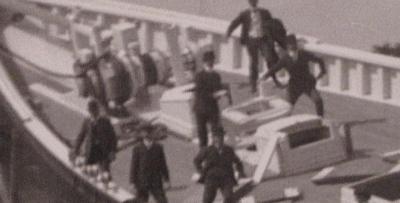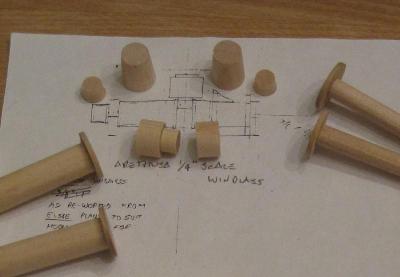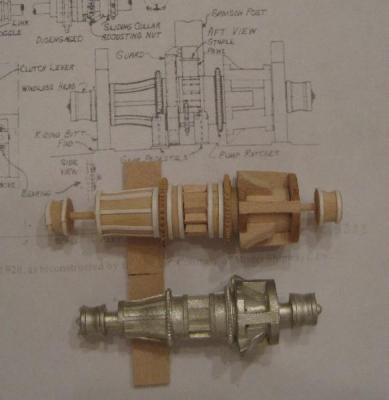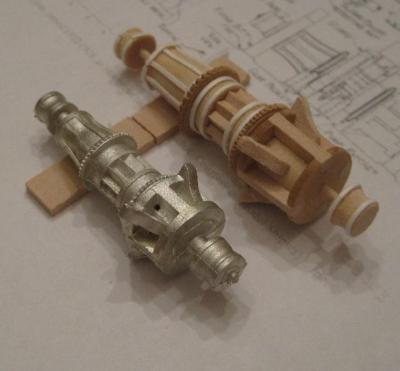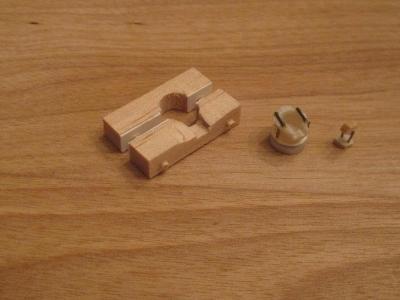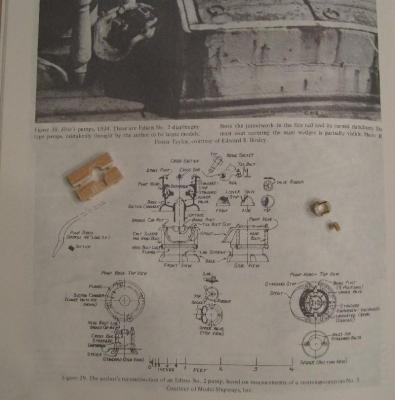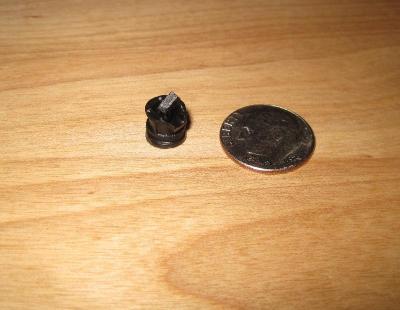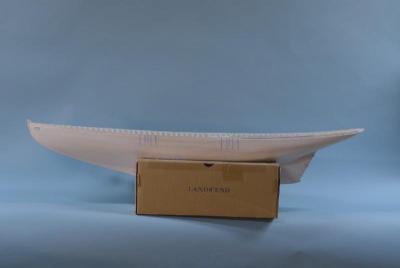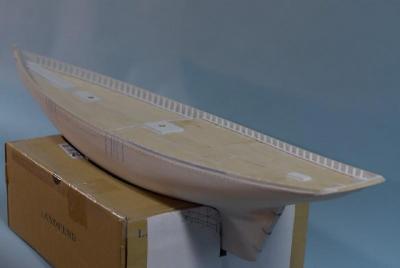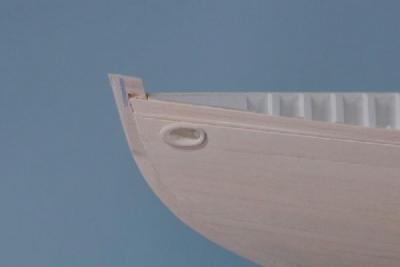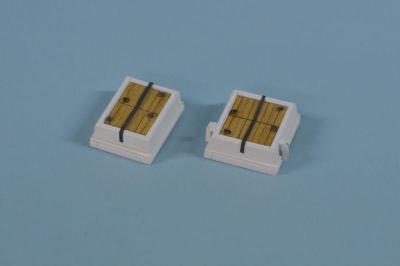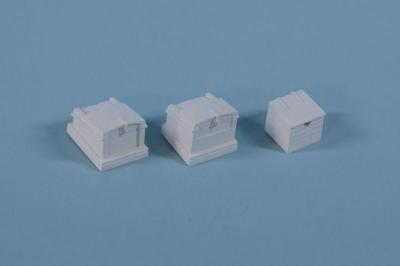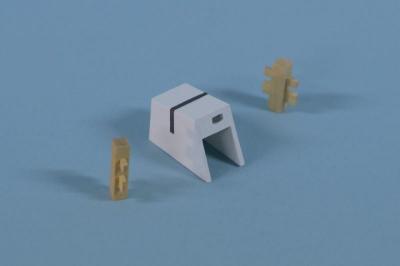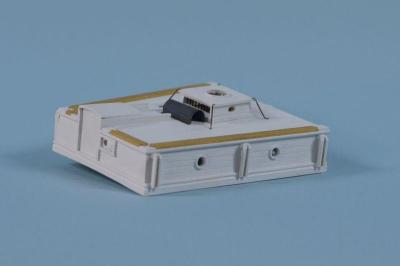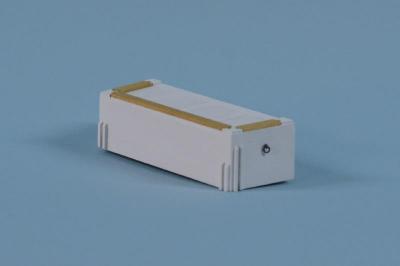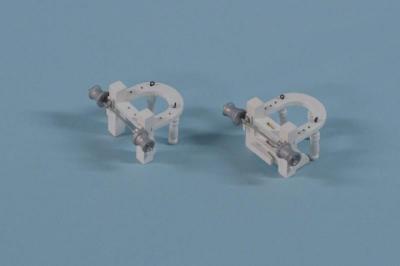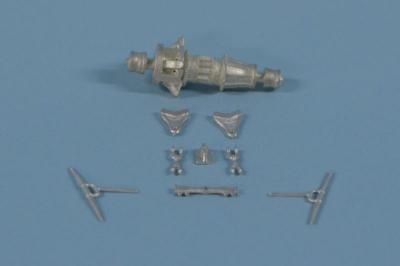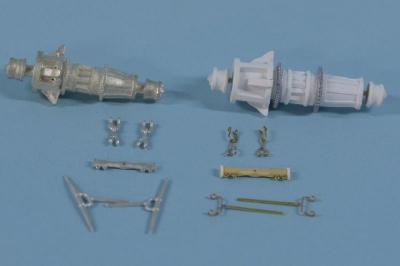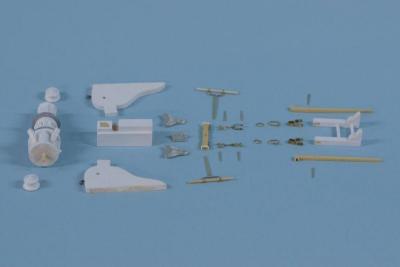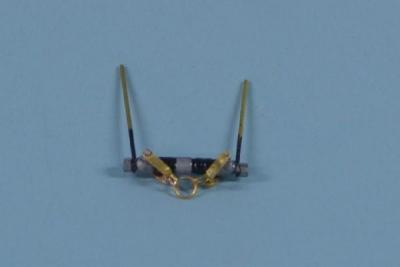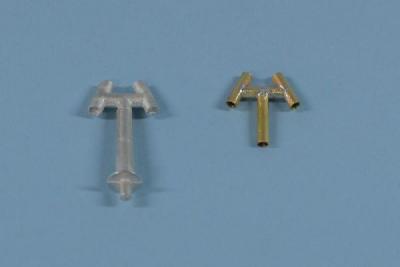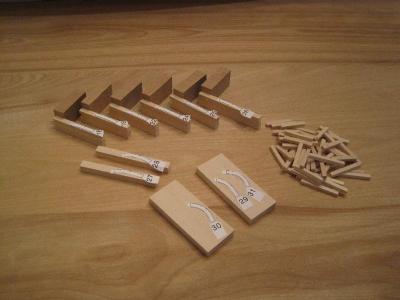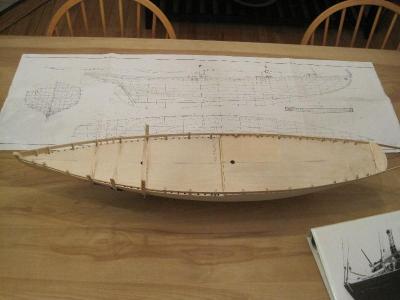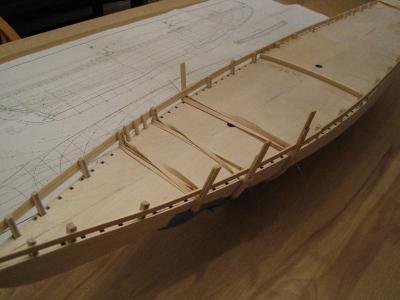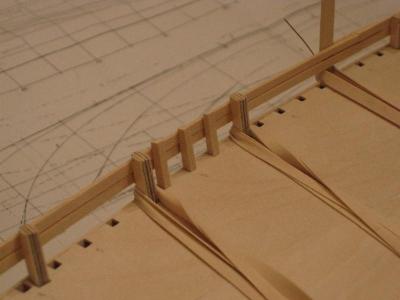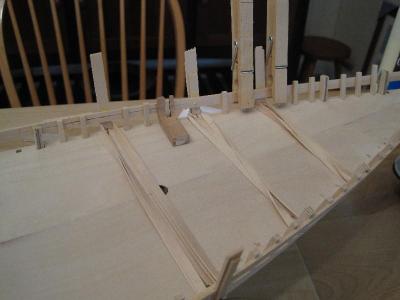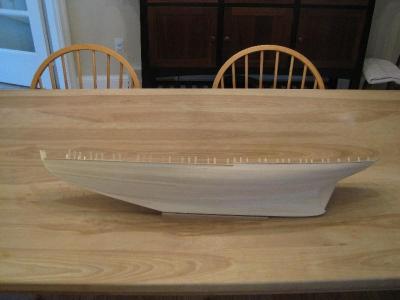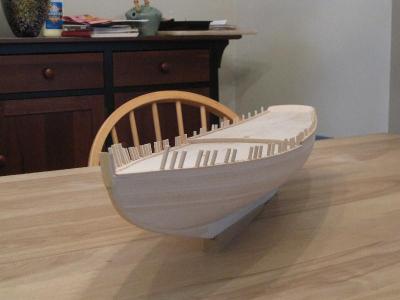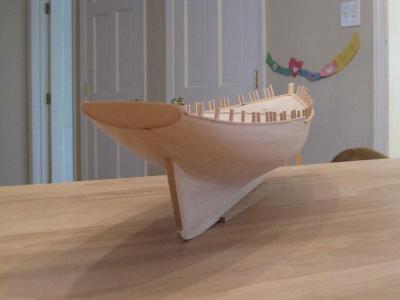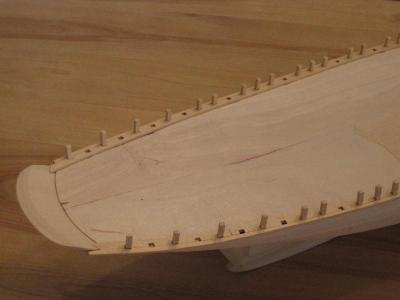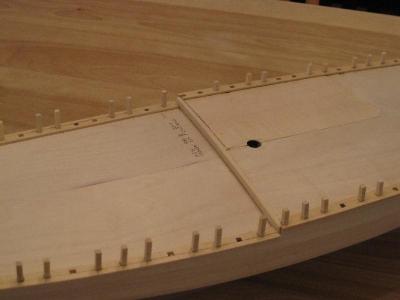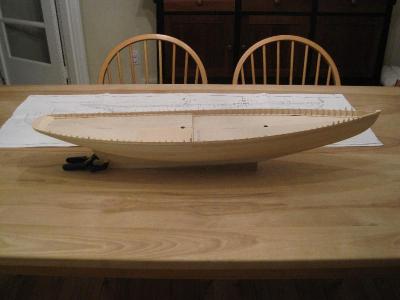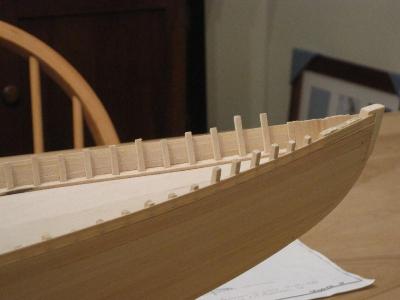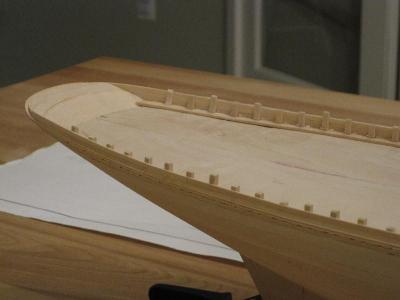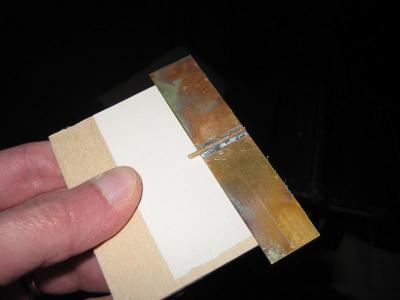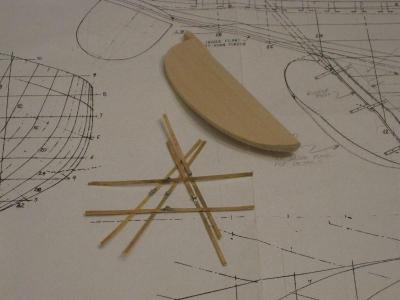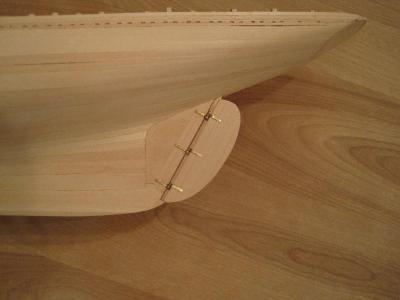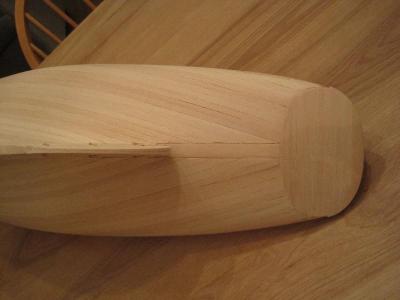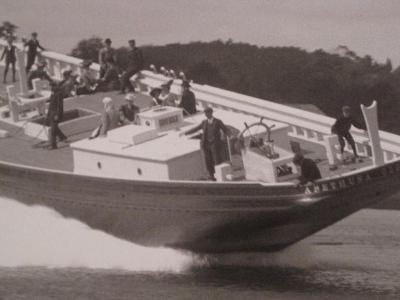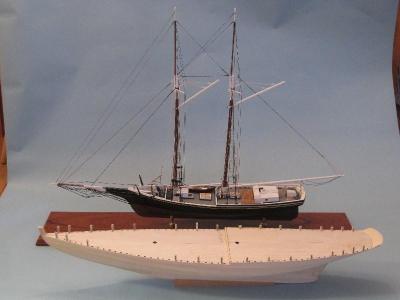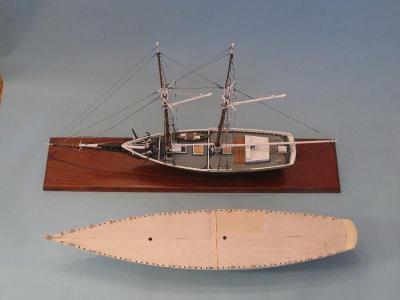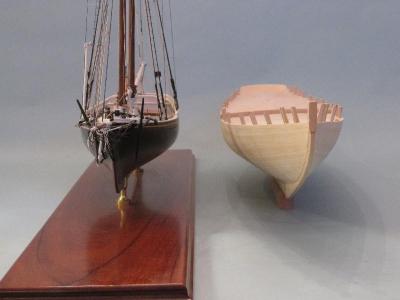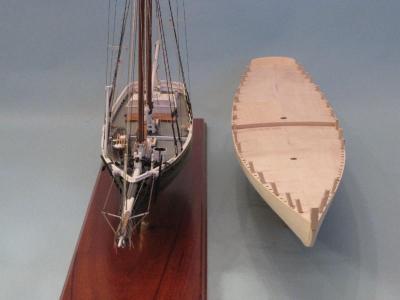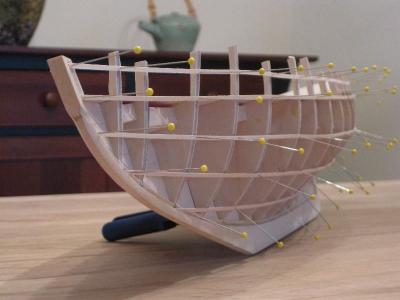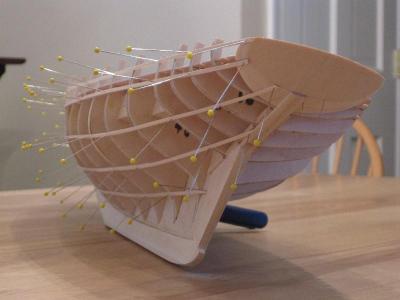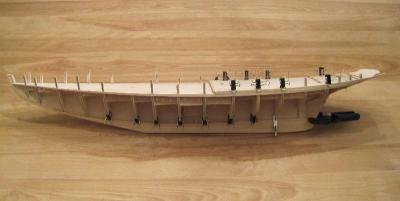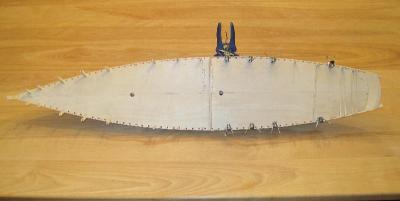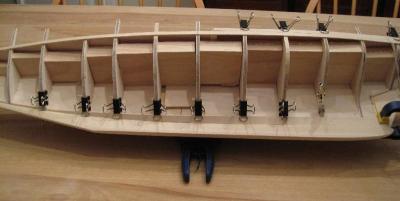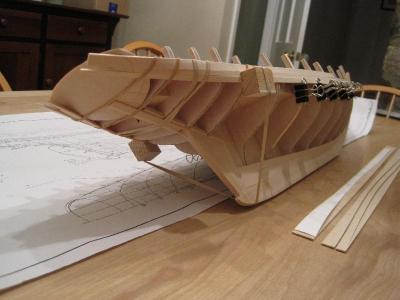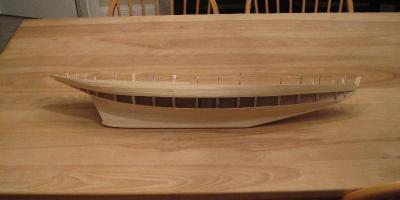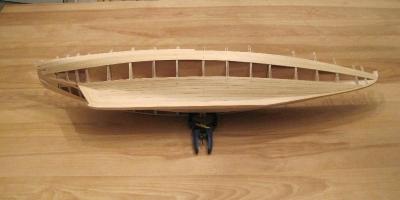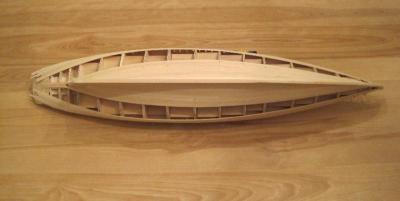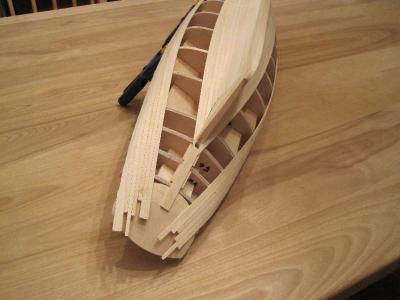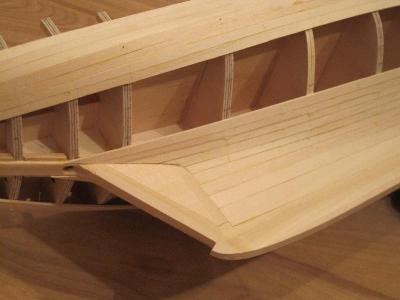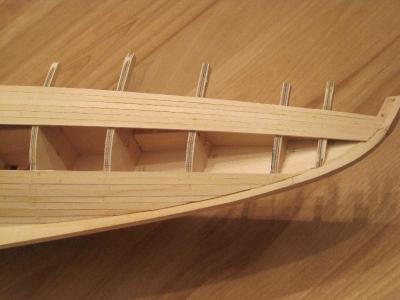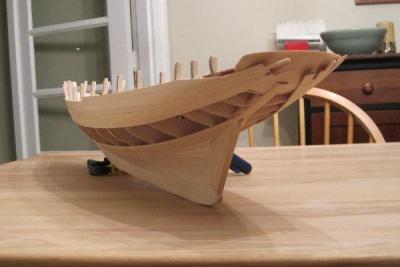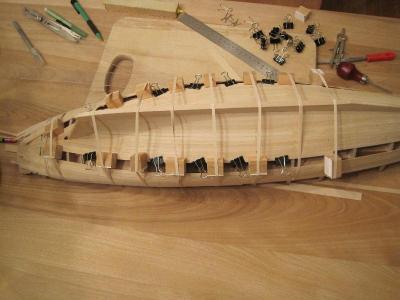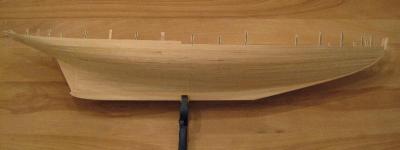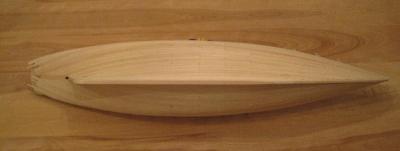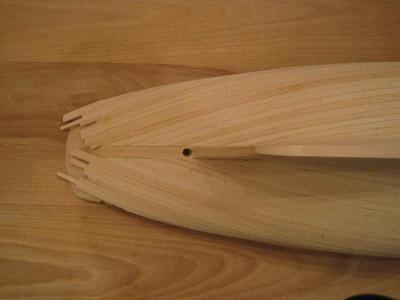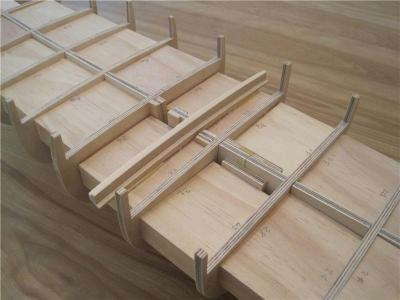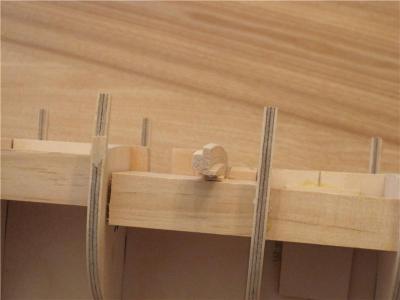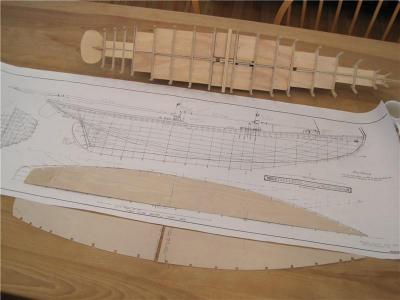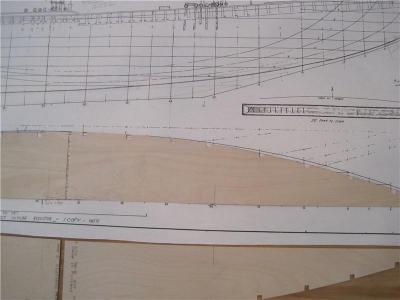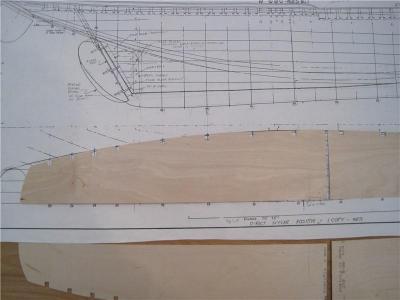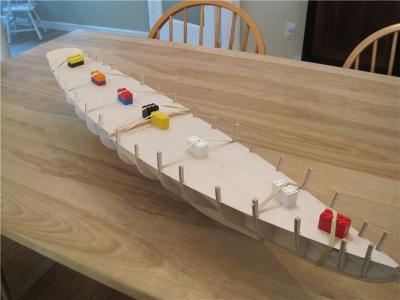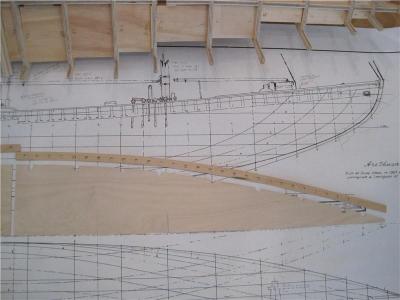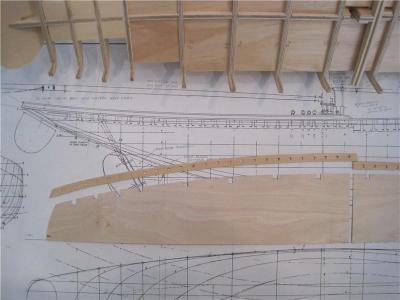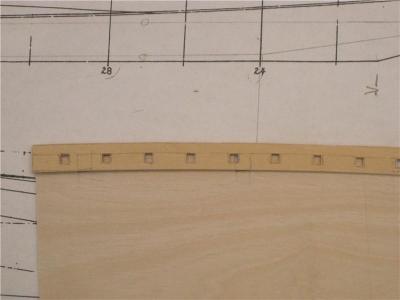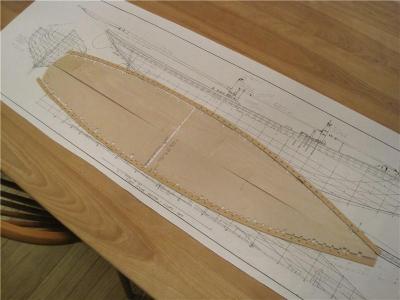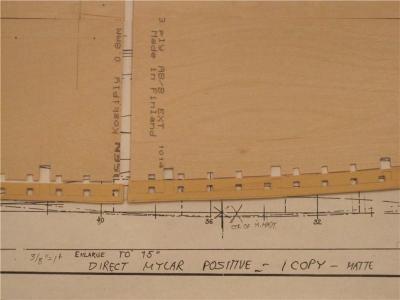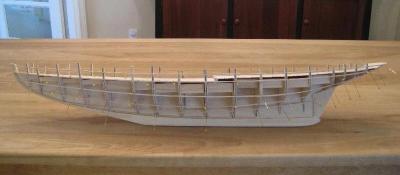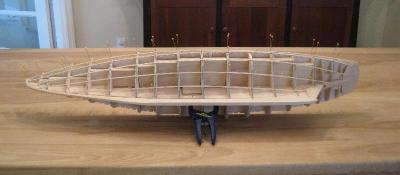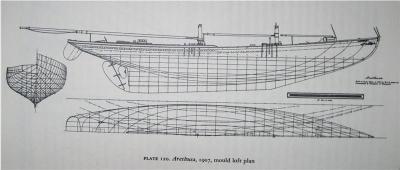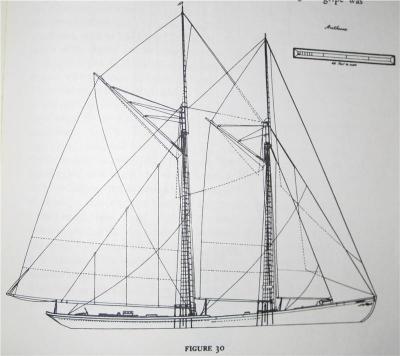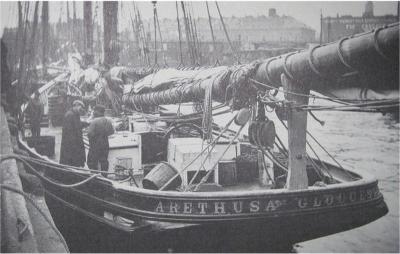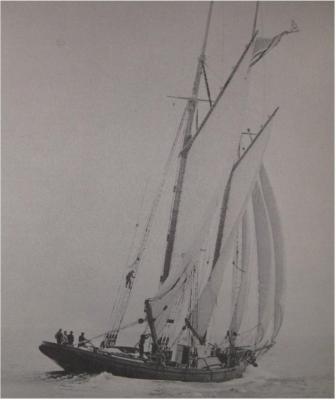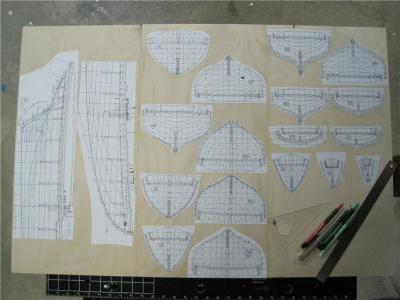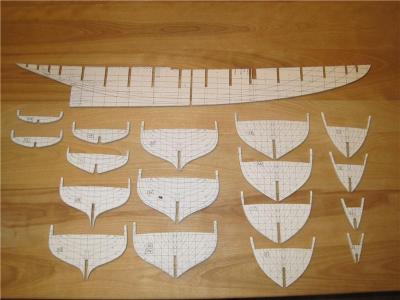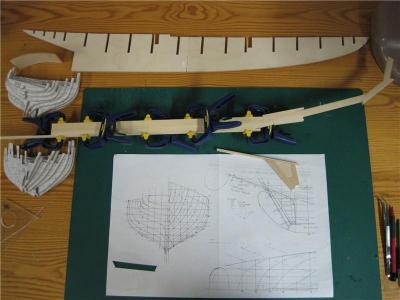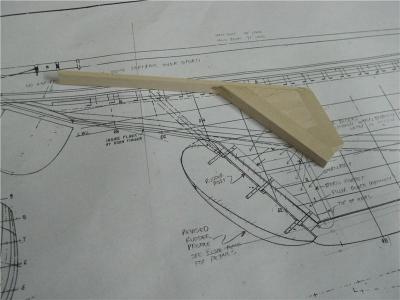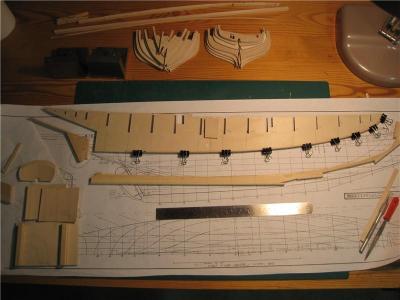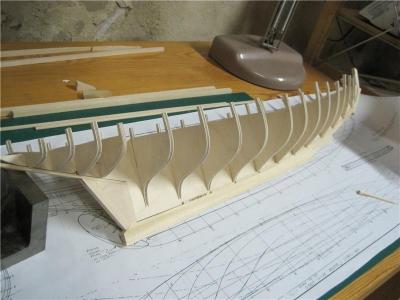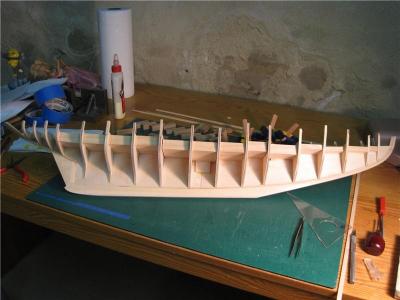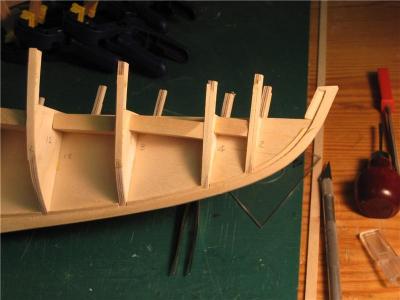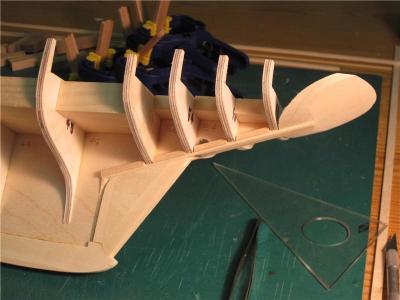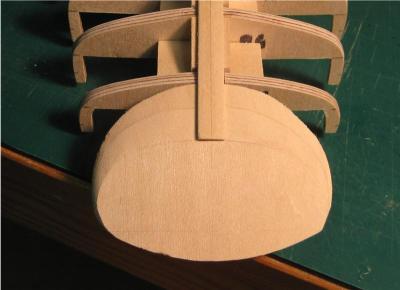-
Posts
548 -
Joined
-
Last visited
Content Type
Profiles
Forums
Gallery
Events
Everything posted by Elia
-
Russ, Bob, Thank you. The cast windlass assembly is pretty nice. It just takes some clean up with a file prior to finishing. I first became acquainted with the Blue Jacket windlass on my Smuggler model and with some clean up and paint it looks pretty good. Some of its details were a little thicker than scale, but my primary issue was that the parts weren't the right size for a schooner the size of Arethusa. The windlass comparison photo is a good example of the size difference. I'll admit that making the brass parts was fun, too. Cheers, Elia
-
Popeye, It's good to see the lobstah boats again. Cheers, Elia
- 552 replies
-
- maine lobster boat
- Midwest Products
-
(and 1 more)
Tagged with:
-
Ron, It was fun making all of the scratch parts. I do wish I had a lathe. My drill press has suffered a bit, as a poor stand-in, for a proper lathe. Now...to begin assembling all of the parts together... Elia
-
Hi Bob, Thanks for stopping in on Arethusa! Yes, I've found it somewhat fun to go back and dig through my saved items. New stuff will be posted soon. Tim, Welcome aboard, and many thanks! Yes, my knockabout is a bit different than the Bluenoses, but possessing many of the same features and attributes. Cheers, Elia
-
Michael, Your (not so little) cutter looks fantastic! Love that rope! Thanks for reconstructing the build log - I always enjoy looking in on it. Cheers, Elia
- 2,207 replies
-
Remco, The build looks superb...just like I remember it! Thanks for restarting it! Cheers, Elia
- 1,207 replies
-
- sloop
- kingfisher
-
(and 1 more)
Tagged with:
-

USN Anchor Hoy 1816 by Hank - 1:48 Scale - POB
Elia replied to Hank's topic in - Build logs for subjects built 1801 - 1850
Hank, I'll enjoy watching this build up - another of your gems. Cheers, Elia -
Dick, Helen B. Thomas - neat! I would love to see your progress to date. Thanks much for checking in on Arethusa. Once the hull is painted (soon, I promise!) I'll be working on fabricating the jumbo traveler, and then painting and assembling all of those windlass related parts. Russ, Clay, Big thanks! I'll be continuing with the log re-build... Cheers, Elia
-
Ron, Michael, Bob, Thank you much for checking in on Arethusa. When I get home from work today I'll continue the log rebuild process. I have some true progress to add once the build log has been reconstructed. In rebuilding the log I've decided to not show many of my questions and re-do's...and there were many...as the lost text and MSW post exchanges are lost and the images would require additional effort. I am always happy and willing to recount some aspect of Arethusa's build if any questions arise. Cheers,
-
The build log reconstruction begins... It has been a long time since I’ve started a new sailing ship build, with my sailing ship model (Oneida) taking about 4 years to complete. Ever since building Smuggler, an 1870’s mackerel seiner from Gloucester, I’ve been smitten by 19th and 20th century American fishing schooners. There are a number builds, both in progress and completed, that have been inspiring to me – Bluenose builds, a couple of Ben Lathams, a scratch build of Columbia, and even a few of the “yachty” Americas. Jim Lefever, who’s impressive Benjamin Latham build was a great inspiration for me, provided me with a list of great reading references on American fishing schooners. After receiving a number of them as gifts, and reading through them, I knew my next build would have to be another fishing schooner. I have to admit right up front that Arethusa, an early 1900s fishing schooner and the topic of this build, was never called the “Goddess of Gloucester”. She was a goddess in Greek mythology. The schooner was named after one of Thomas McManus's daughters. I just thought that 'Goddess of Gloucester' fit to her will and made for a catchy name for this log. Arethusa, the schooner, was big, beautiful, and had a colorful history – sounds interesting to me. Enough about my motivations and ramblings….let’s get on with the ship. Arethusa was designed by Thomas F. McManus in 1907 and built by James and Tarr in Essex, Massachusetts, in 1909. She was what is termed a knockabout schooner. Unlike traditional schooners, with bowsprits (and jibbooms, and flying jibbooms), knockabout schooners had an extended bow and no bowsprit. The extended bow essentially placed the fore topmast stay at the same position as on a traditional schooner. With that configuration of stay location the crew wouldn’t be required to climb out on the typically poorly maintained footropes aside the bowsprit in order to perform tasks involving the sails and rigging. This was a Thomas McManus innovation, based on his observations and discussions with fisherman and owners, and was meant to reduce sailing crew injuries and deaths. I am using Howard I. Chapelle’s lines drawing and sail plan of Arethusa from his “American Fishing Schooners”, plate 120 and figure 30. “American Fishing Schooners” (AFS) has a great deal of detail in it’s appendix on most of the features of late 19th century and early 20th century schooners, and it is these I will use to build the details of the model. If anyone knows of more details about Arethusa I would be most grateful to learn of them. I have contacted Mystic Seaport Museum about their collection but found that while Arethusa is listed in their collection they don’t have any more information than that (little) which is shown in AFS. Following are some excerpts from “Thomas F. McManus and the American Fishing Schooners”, by W.M.P. Dunne, on Arethusa: James and Tarr “...completed her on 25 September 1907. Fifteen feet longer than the Pontiac, the Arethusa was, nevertheless, a deep, short ended knockabout, with the typically knuckled straight run of the keel (although with less drag), that Tom favored in this class, and more tumblehome. Once again he experimented with the rig. He stepped the foremast farther forward with the masts further apart. Right from the start, the big fisherman earned a reputation as a speedster. Captain Clayton Morrisey, the Arethusa’s first skipper waxed poetic: “She’s the slickest bit of wood that ever went down to Bay of Islands. Nothing can touch her and an eight-year-old girl’s little finger is stout enough to spin the wheel no matter how fresh it breezes.” “Can she sail?” exclaimed Captain Morrisey, opening his eyes as if he didn’t quite believe his ears. “Why, when we were coming up from the herring grounds she cut out her 13 knots an hour for six consecutive hours.” “We’d see a blotch of smoke away ahead on the horizon and in a little while would make out a tramp steamer bound our way. Pretty soon the Arethusa was kiting alongside the tramp and then we’d lose sight of her astern. She did that trick a number of times.” In fact, with Clayt Morrissey at the helm in 1912, the Arethusa would easily outrun the Canadian Dominion fisheries’ patrol steamer Fiona, “whose commander opined the Arethusa was violating the three-mile limit.” “At the beginning of 1921, soon after the new [prohibition] law was in place, Captain William F. “Bill” McCoy, a sometime Daytona Beach, Florida, boatbuilder, guided his fully-laden McManus schooner, the Henry L. Marshall, past the Tybee Lighthouse and up the river to Savannah, where, in the dark of the night, he discharged not fish, but 1,500 cases of illicit liquor. With the proceeds, McCoy replaced himself with a new skipper on board the Marshall and went to Gloucester in search of the boat of his dreams, Tom’s speedy Arethusa. Although McCoy had fished the Marshall legitimately until after the Eighteenth Amendment dried out the country, he had always thirsted for Arethusa. With Gloucester feeling the effect of postwar economic contraction, the owners of the fourteen-year-old schooner…..sold her to McCoy in April 1921. The Arethusa became a rum runner, a fast freighter of bootleg spirits. McCoy renamed her Tomoka, added a bowsprit so she could carry two jibs, jumbo and jib topsail-and a lot of liquor (she had the capacity of 6,000 cases of illegal alcohol). He brought the Tomoka to anchor just outside the then three mile limit of United States waters, but well within site of the beach. He soon began a thriving business with New York and New Jersey bootleggers…. “ [this is where the term ‘the real McCoy’ came from] Arethusa later returned to fishing, and was lost off Halifax in November 1929. Her particulars are: Designer Thomas F. McManus Builder Tarr and James Launch date 25 September 1907 Gross tonnage 157 tons Molded length at caprail of 127’ – 3” Molded beam 25’ – 0” Molded depth 13’ – 2” Registered dimensions 114.0’ x 25.6’ x 12.5’
-
Bob, It is good to see you back on the board here. I am very much looking forward to seeing your Bluenose build back up and running. With few Banks fishing schooner examples here on MSW I have found your build and it's log very interesting and insightful, from how Bluenose was fitted out to how you approached building or solving some build riddle. Cheers, Elia
-
Ed, Here is another who is thankful for your superb Naiad and the build log, and your having saved the log contents. I may not post much but have always looked in on Naiad - it has been a joy to read and observe. Cheers, Elia
About us
Modelshipworld - Advancing Ship Modeling through Research
SSL Secured
Your security is important for us so this Website is SSL-Secured
NRG Mailing Address
Nautical Research Guild
237 South Lincoln Street
Westmont IL, 60559-1917
Model Ship World ® and the MSW logo are Registered Trademarks, and belong to the Nautical Research Guild (United States Patent and Trademark Office: No. 6,929,264 & No. 6,929,274, registered Dec. 20, 2022)
Helpful Links
About the NRG
If you enjoy building ship models that are historically accurate as well as beautiful, then The Nautical Research Guild (NRG) is just right for you.
The Guild is a non-profit educational organization whose mission is to “Advance Ship Modeling Through Research”. We provide support to our members in their efforts to raise the quality of their model ships.
The Nautical Research Guild has published our world-renowned quarterly magazine, The Nautical Research Journal, since 1955. The pages of the Journal are full of articles by accomplished ship modelers who show you how they create those exquisite details on their models, and by maritime historians who show you the correct details to build. The Journal is available in both print and digital editions. Go to the NRG web site (www.thenrg.org) to download a complimentary digital copy of the Journal. The NRG also publishes plan sets, books and compilations of back issues of the Journal and the former Ships in Scale and Model Ship Builder magazines.



